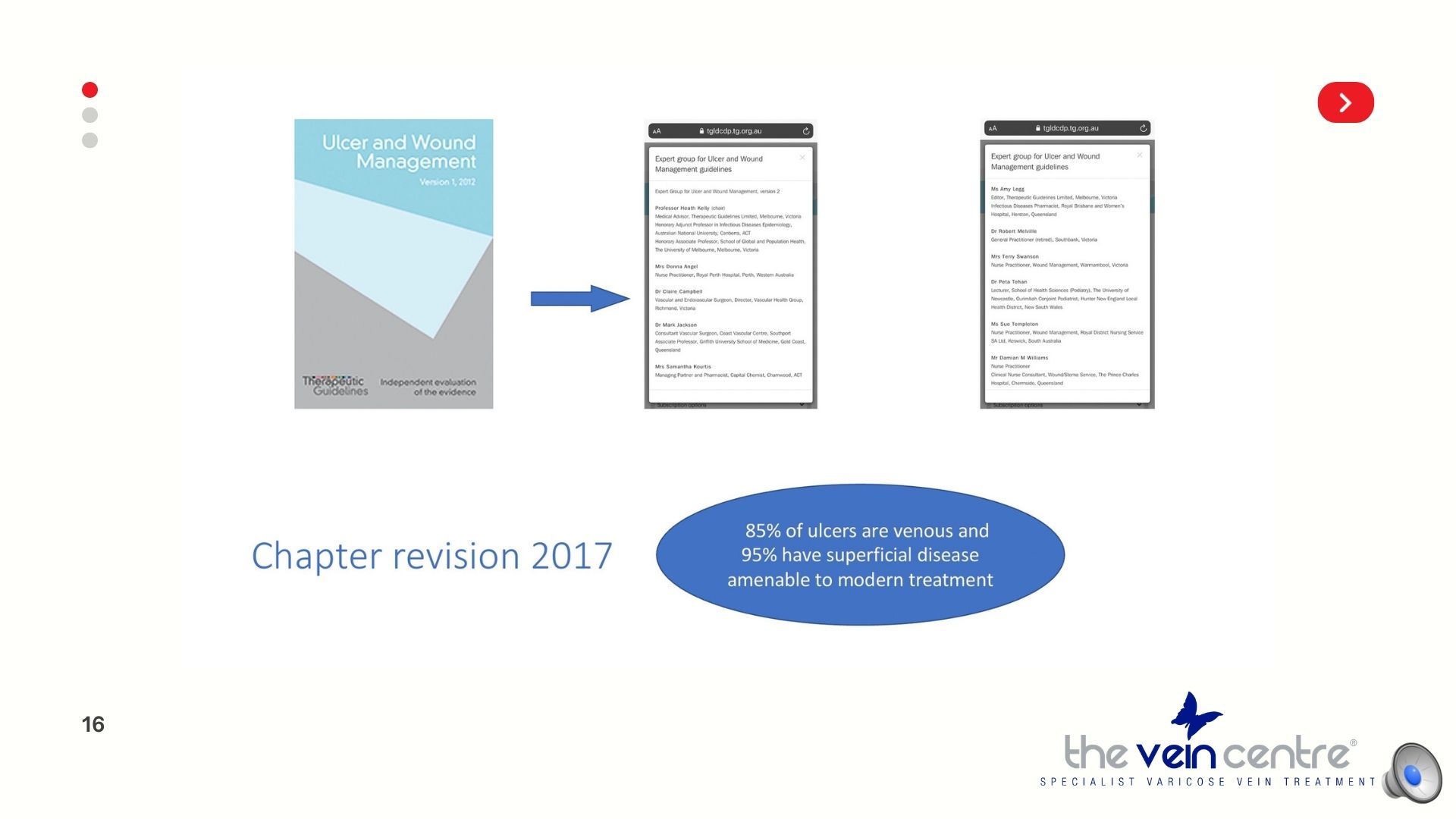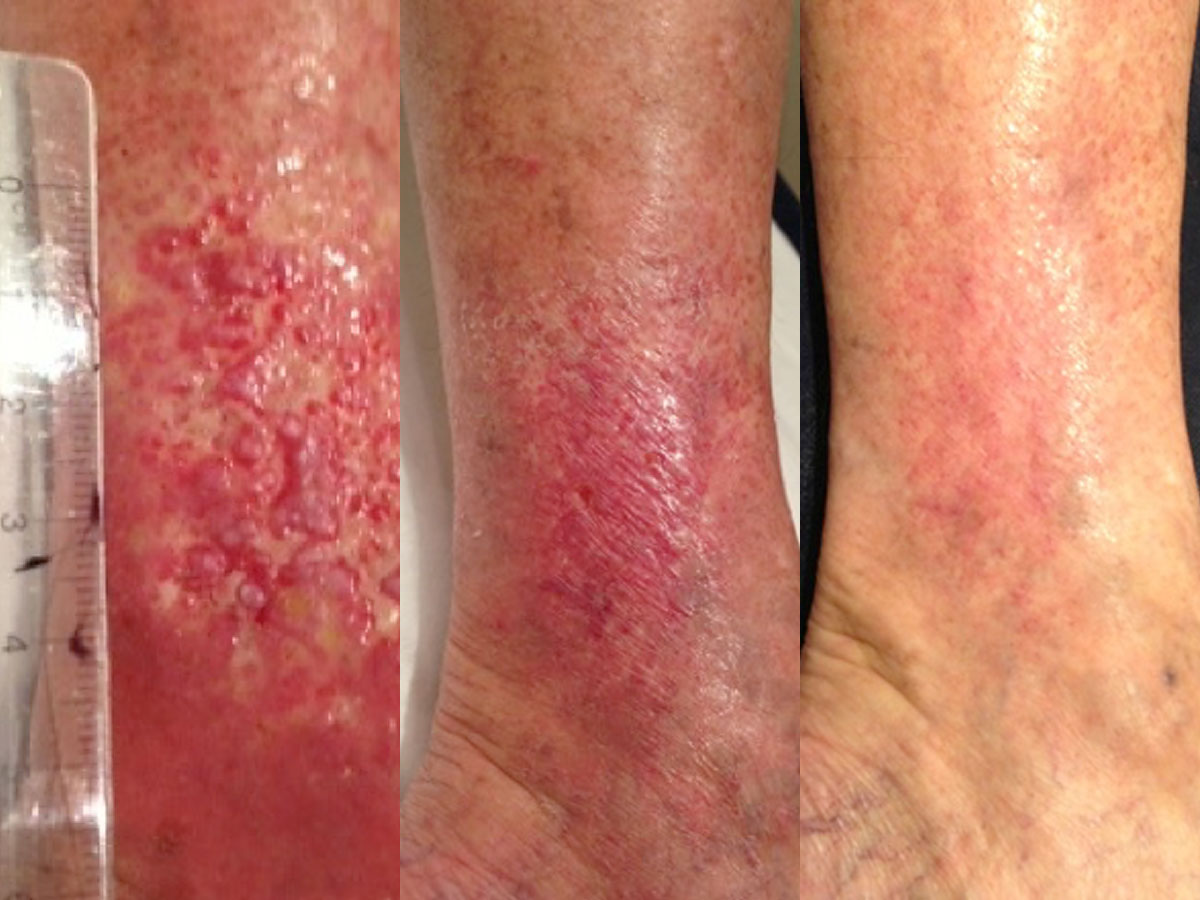Introduction
A leg ulcer is the full thickness loss of skin on the leg or foot. Chronic ulcers have a protracted healing time, greater than four to six weeks. They often occur due to an injury of the skin, such as a minor knock or bump. In those with healthy tissues this heals quickly. However, when there is an underlying problem, the skin does not heal. The skin continues to breakdown and the wound increases in size.
As an expert in Leg Ulcer care, Dr Campbell was part of the working group to review the Australasian Guidelines which are now published in the Therapeutic Guidelines Ulcer and Wound.
Causes
The most common underlying problem is venous disease and this causes about seventy to eighty percent of leg ulcers. About ten to fifteen percent are caused by arterial disease. Other causes include neuropathy (numb skin), diabetes, pressure, uncontrolled hypertension, skin cancer, and numerous inflammatory processes such as infection and vasculitis. Some leg ulcers are of mixed aetiology.
Venous ulcers are found on the lower limb, commonly at the ankle. In abnormal veins, the wall stretches so that the one way valves no longer meet. Blood flows down the leg towards the ankle, instead of forwards and to the heart. This backlog of blood causes increased pressure in the veins and they begin to leak. Fluid and cells making up the blood are forced out into the surrounding tissues. Fibrin leaks out from capillaries and surrounds the capillary like a cement wall preventing the flow of oxygen and nutrients to the tissues.
Signs and Symptoms
Full thickness skin wound on the lower limb that does not heal within a normal time frame. Venous leg ulcers usually affect the inner or outer ankle. They may be associated with redness and itching in the local area and swelling.
Diagnosis
- Physical exam.
- Ultrasound.
Treatment
Most venous leg ulcers heal when the underlying superficial venous hypertension is addressed. This involves closing abnormal veins to prevent ongoing venous congestion and leakage. Compression stockings are an essential component of treatment and prevention of venous leg ulcers.
Treatment options include Endovenous Laser Therapy, Ultrasound Guided Sclerotherapy, and Ambulatory Phlebectomy.
Related Information
Endovenous Laser Therapy
Ultrasound Guided Sclerotherapy
Ambulatory Phlebectomy





